Oct 25 2024
How To Prepare A Boat For Storage
Whether you are looking to pack your boat away for the off-season or move your vessel closer to the water, boat storage is a great option to keep your boat safe and secure. After all, your boat is a prized possession that should be well looked after. Without proper care, boats can get damaged from the elements with corrosion, mould, mildew and pests. Looking to place your vessel into storage? This article delves into the top tips you need to know to prepare your boat for storage.

Types of Boat Storage
Before diving into boat storage, it is important to consider what type of boat storage is right for you. Consider how often you use your boat along with how you like to use your vessel throughout the year. Whether it is casual days spent on the water or regular fishing expeditions with friends.
Home storage is a popular option for casual seafarers who have room in their garage or garden to store a boat and its trailer. This is perfect for people with enough space to securely store a boat on their property. However, this often is not as practical for inner-city living, as properties with smaller garage spaces and on-street parking have a higher risk of vandalism, theft or damage from the elements.
Another option for boat storage is the marina, which provides a secure place to moor a boat by the water for easy access to the open ocean. This is suitable for regular boat users who use their vessel weekly or bi-weekly throughout the year. However, leaving your boat in the marina can result in seawater corrosion and the build-up of marine organisms such as algae and barnacles. Over time, this can lead to faster wear and tear, as well as impacting boat performance and fuel efficiency. So, it is important to consider how often you will use your boat and if you will require instant access to the marina, or if taking your boat trailer to the boat ramp can do the trick!
Dry boat storage in a self-storage facility is another option for storing your boat in a weatherproof, accessible and secure external space. This is popular for casual voyagers who are searching for a closer spot to the marina to store their boat. Simply drive by, pick up the boat trailer and head for the open water! Alternatively, dry boat storage in a self-storage facility can be used seasonally as boat storage in the offseason or as a secure space to keep your boat whilst travelling.
How To Prepare A Boat For Storage
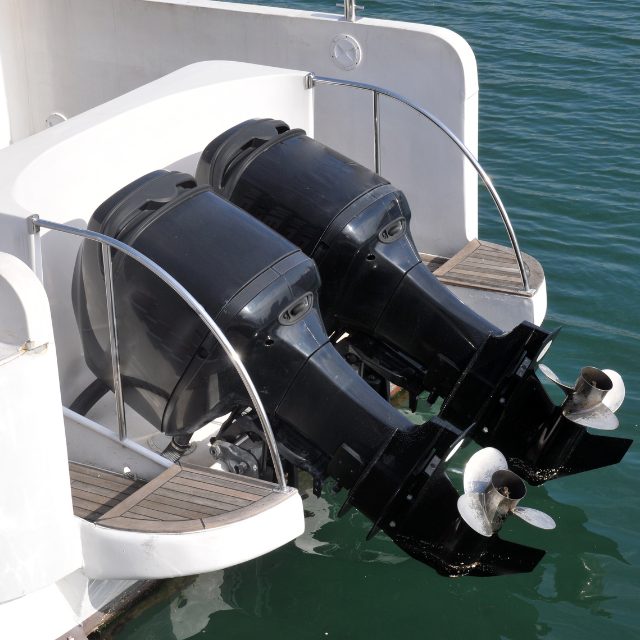
Step One: Flush The Engine
Once you have selected the right type of boat storage for you and the move-in storage day is quickly approaching, it is time to flush the engine. Whilst this step should be completed after each use, before placing your boat in storage, it is extremely important to flush the engineâs cooling system.
With general use of your vessel, over time refuse can clog up the engine which reduces its efficiency and can in some cases cause overheating and corrosion. It is recommended to flush the engine cooling system in accordance with the manufacturer's salt removal recommendations.
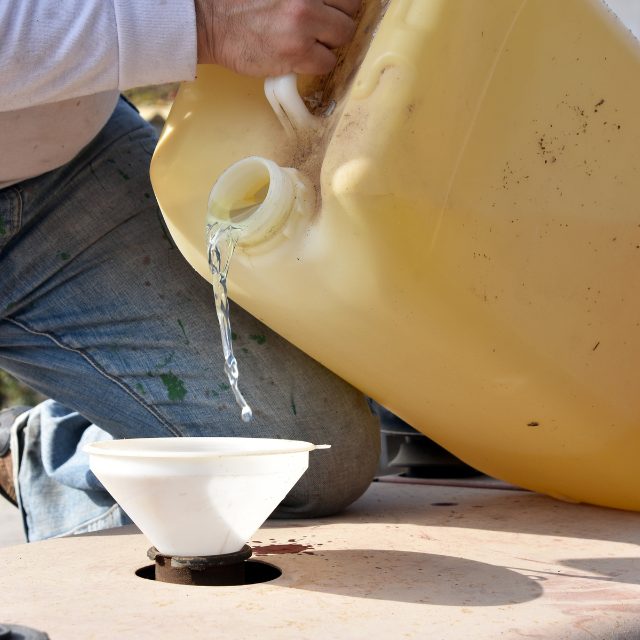
Step Two: Stabilise The Fuel Tank
After flushing the engine, it is time to stabilise the fuel tank to prepare the boat for storage. Fuel stabilisation is the process of adding a chemical stabiliser to prevent fuel from breaking down, oxidising or absorbing moisture during long-term storage or over 30 days without use. By doing this, boat owners can preserve fuel quality and protect the engine from corrosion, water contamination and fuel degradation.
To stabilise the fuel, purchase a marine-grade fuel stabiliser compatible with your boatâs engine and then fill the fuel tank by 95%. Filling up the boat with fuel before storage can reduce the risk of air and moisture that can build up and reduce the risk of condensation.
Next, measure the amount of stabiliser and pour directly into the fuel tank. Then, start the boat engine and let it run for a minimum of 10-15 minutes. This ensures the entire fuel tank is protected against gum and varnish buildup whilst in storage.
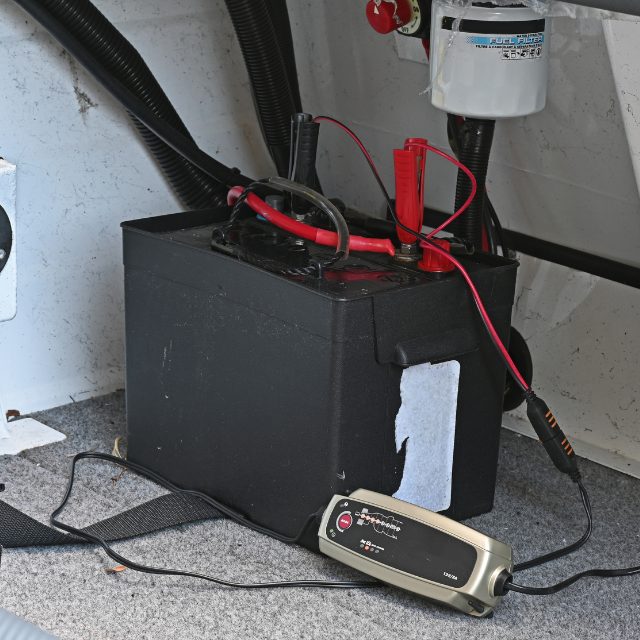
Step Three: Remove The Batteries
Removing the batteries of a boat before storage can prevent potential damage, extend vessel battery life and ensure safety. One of the most common issues that can occur with boats placed into storage without the battery being removed is battery drain. This is particularly common when the battery is not in use and leads to a slow discharge over time, reducing the lifespan of the battery or battery failure. Removing the battery disconnects it from the systems in the boat such as pumps, alarms or electronics to prevent discharge.
Another issue that occurs in tropical environments, such as Queensland, is battery corrosion. This occurs when a battery is connected in a damp or humid environment and can corrode the battery terminals and cables. As a result, it is much harder for the battery to function when the boat is back in use, so it is important to remove the battery before boat storage.
Removing the battery from the boat also helps to prevent the battery from freezing in cold climates as well as stop fire hazards caused by a battery short-circuiting. So be sure not to skip this step! Once the batteries have been removed, connect them to a charger to keep them topped up and ready for use when you need them.
Step Four: Clean The Boat
Next, it is time to clean the boat to start preparing the vessel to go into storage. This can help prevent mould, mildew, moisture and rust build-up. It is recommended to start by cleaning the interior first and then move to the exterior.

To clean the exterior of the boat, follow the below steps:
- Rinse the boat: Using a hose, rinse the exterior of the boat starting from the top and working down to remove any excess saltwater, dirt or grime. Focus on difficult areas such as corners, seams and the bottom of the boat where it is most often submerged in water.
- Scrub the hull: Use a boat-safe cleaner and mix it with water, using a soft-bristle brush or sponge to scrub the hull clean. Be sure to clean gently on any painted surfaces or decals on the boat to avoid damage. This will remove stubborn dirt, algae or stains the initial hose-down did not remove.
- Wash the deck and windows: For the deck and floors of the boat, use a non-slip deck cleaner to scrub mildew or grime. Then, clean the windows using marine glass cleaner to remove saltwater buildup, water spots and streaking.
- Polish and wax the hull: After conducting an initial clean of the boat exterior, it is time to apply a protective marine wax to the boat hull with a microfibre cloth and buff it with a clean towel to create shine. This will seal the surface, prevent oxidization and create a barrier against moisture and UV damage.
- Clean hardware: After giving the boat a good wash and polish, using a metal cleaner clean and dry the railings, cleats and hardware on the boat to stop salt buildup and lower the risk of rust or corrosion over time.
- Drain standing water: Drain any standing water from the bilge and other areas of the boat. Then, use a bilge cleaner to scrub away oil, grease or grime. Rinse out with fresh water and dry thoroughly.
- Let it dry: Let the boat exterior dry before covering!
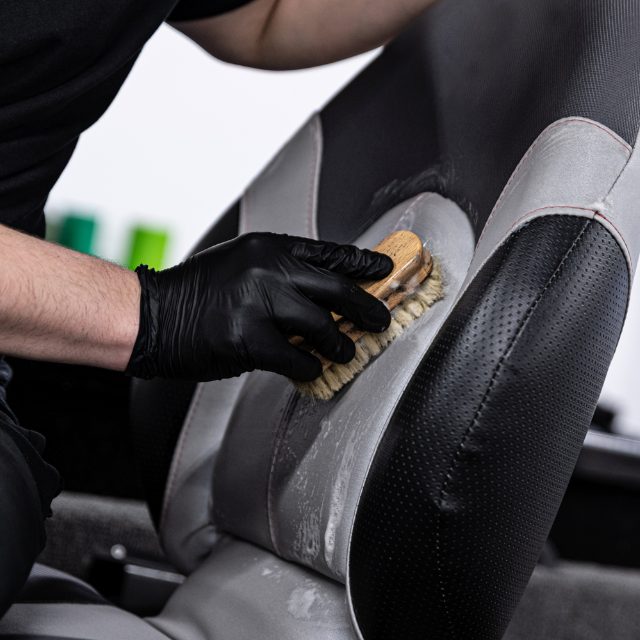
To clean the interior of a boat, follow these instructions:
- Remove loose items & valuables: Whether the boat is being stored on your property or off it, it is important to remove all loose items such as life jackets, ropes, electronics, valuables and personal belongings. This can help to reduce the risk of moisture buildup whilst in storage as well as prevent theft of important items!
- Vacuum flooring and upholstery: Vacuum any dirt, dust and debris from carpet, cushions and upholstery on the boat. For fabrics, spray a fabric-safe mould and mildew remover or remove all cushions into a dry area whilst the boat stays in storage.
- Wipe down surfaces: Use a marine-safe cleaner and wipe down the boat interior including countertops, shelves, cabinets and outdoor furniture. Be sure to check tricky spots such as corners and under-seat storage!
- Clean interior spaces: If your boat is larger, be sure to scrub sinks, countertops, appliances, showers and toilets throughout the vessel with disinfectant spray to prevent bacteria and mould growth. Remove any remaining food from the vessel and clean out any fridges or freezers on board.
- Ventilation: After cleaning the boat interior, leave drawers, cabinets and interior doors slightly open to boost circulation. If necessary, add moisture absorbers in key areas to prevent mould and moisture.
- Leave to dry: Let the boat interior dry before covering!
Step Five: Conduct Maintenance Checks
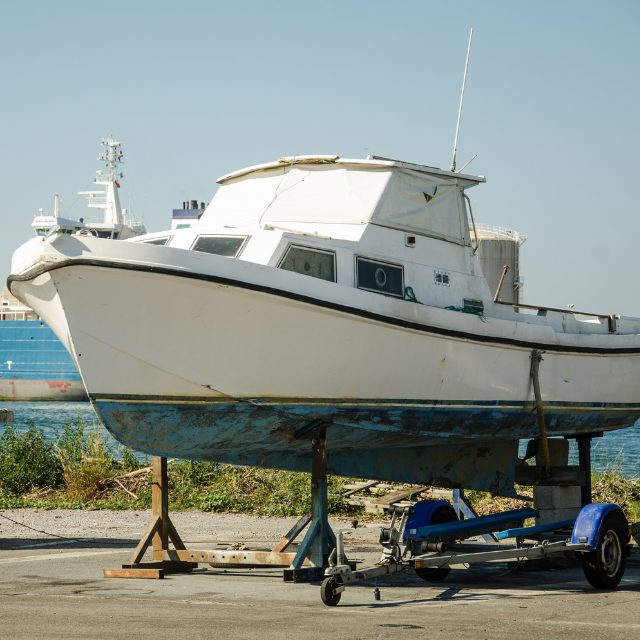
Regular maintenance checks of the vessel are an important part of being a boat owner. Before placing your boat into storage, it is important to conduct a final check of the boat to make sure itâs ready to head into storage. Assess your boat for any damages or elements that can be replaced when the boat is out of the water such as props or seals before placing it into storage. Make sure to lubricate moving parts as well as check cables and oil too!
Step Six: Cover The Boat

After thoroughly cleaning, drying and servicing the boat, it is time to cover it with a waterproof and protective cover. This will prevent dust, pollutants, pests and UV radiation from damaging the vessel whilst in storage. Be sure to select a boat cover that fits tight and snug around your boat to keep it secure and protected!
Before placing the cover onto your boat, place a few moisture absorbers inside to prevent excess moisture and mould growth. Then put the protective cover on and itâs ready to go to storage!
Discover Quality Boat Storage

There you have it! Our storage expert guide to preparing your boat for storage. Whether youâre looking to place your boat into long-term storage, or are just after a short-term solution between seasons, Loxon Storage has a space to suit.
At Loxon Storage, we offer a variety of indoor storage units and hardstand storage areas perfect for keeping boats safe and secure. With clean, convenient and affordable dry boat storage solutions, you can find the perfect storage space for your vessel. Want to learn more? Contact your local Loxon Storage facility today and speak to our friendly team who can help find the best boat storage option for you.
How To Prepare A Boat For Storage Summary
- Flush the engine
- Stabilise fuel
- Remove batteries
- Clean the boat and trailer
- Conduct final maintenance checks
- Cover the boat




